链表
文章目录
顺序表的缺陷
上篇文章我们介绍了顺序表,顺序表的底层是数组,当我们在进行数组的添加和删除时,需要将后序元素依次移动位置,使得时间复杂度为O(N),效率比较低。因此:java引进了LinkedList,即链表结构。
概念
链表是一种物理存储结构上非连续的存储结构,数据元素的逻辑顺序是通过链表中的引用链接次序实现的。简单来说,链表不会按照顺序表的存储结构去存储数据,而是在每一个节点里存放下个节点的地址 。
结构
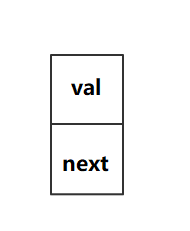
这是一个简单的单向链表的结点,val表示的是当前结点要存的值,next表示引用,用来存放下一个结点的地址。
由于Java中不存在指针,所以每一个结点通常为一个类,而next是一个结点类实例的引用
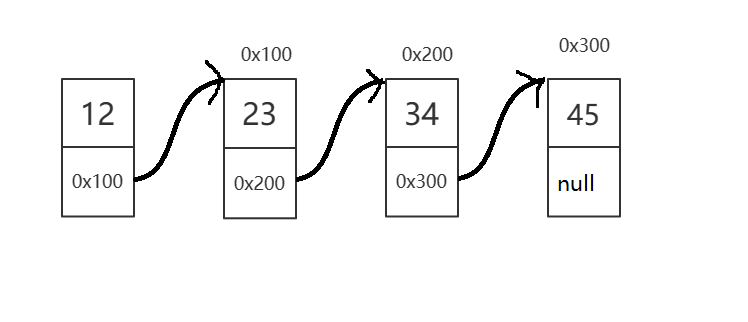
创建链表
我们介绍了链表,可是该如何创建一个链表呢?
在Java中我们用类来表示链表的结构
public static class Node {
int value;//值
Node next;//结点引用,引用当前节点的下一节点
public Node(int value) {
this.value = value;
}
}
结点的插入
在链表中插入一个节点时,一般有3种方法:头插、尾插、指定位置插入
头插
在链表的起始位置插入结点。
public void addFirst(int data) {
Node node = new Node(data);
node.next = head;
head = node;
}
代码很简单,思路也很简单
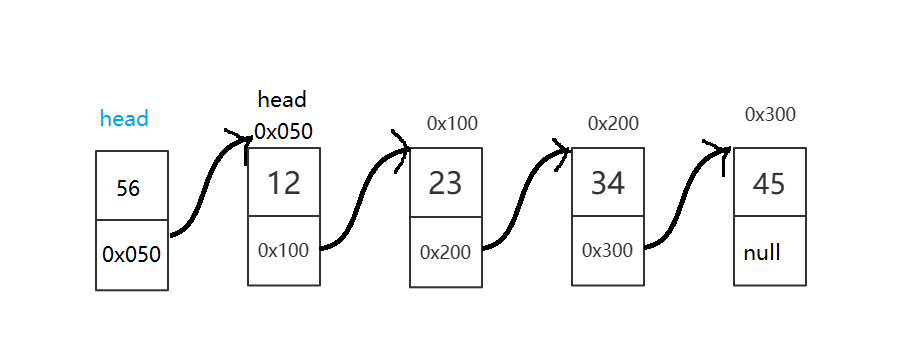
尾插
与头插相似,只是在最后一个结点的位置插入新结点。
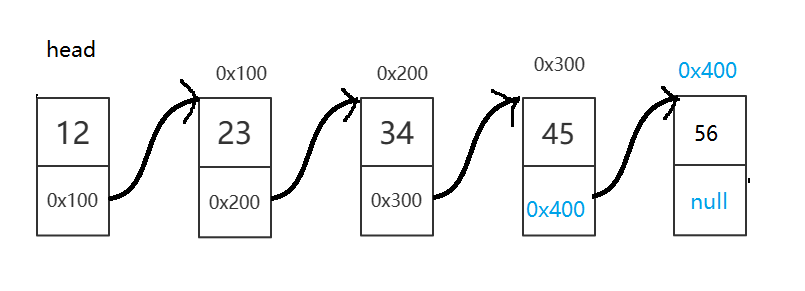
//尾插法
public void addLast(int data) {
//创建新链表
Node node = new Node(data);
//判断链表是否为空
if (head == null) {
addFirst(data);
return;
}
//后面节点
Node current = head;
while (current.next != null) {
current = current.next;
}
current.next = node;
}
指定位置插入
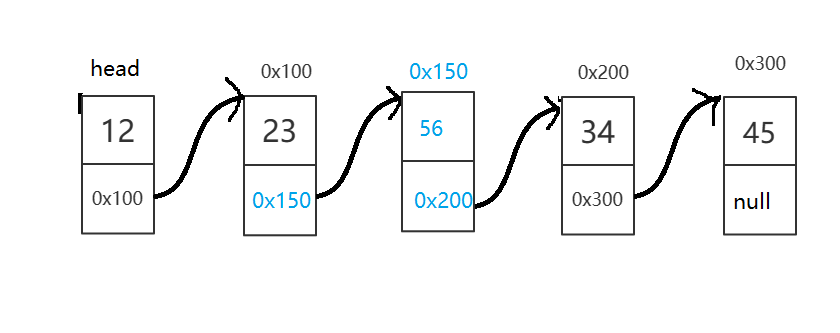
private void checkRange(int index) {
if (index < 0 || index > size()) {
throw new IndexOutOfBoundsException("下标非法 i=" + index);
}
}
//任意位置插入,第一个数据节点为0号下标
public void addIndex(int index, int data) {
//检查index合法性
checkRange(index);
//首位
if (index == 0) {
addFirst(data);
return;
}
//尾部
if (index == size()) {
addLast(data);
return;
}
//中间位置
//首先找到所找节点的上一节点
Node preNode = findPreNode(index);
//创建新节点
Node node = new Node(data);
//用node.next引用preNode.next
node.next = preNode.next;
//preNode.next引用新节点
preNode.next = node;
}
private Node findPreNode(int index) {
//创建临时节点
Node current = head;
for (int i = 0; i < (index - 1); i++) {
current = current.next;
}
return current;
}
查找是否包含关键字key是否在单链表当中
遍历数组即可
public boolean contains(int key) {
//遍历链表
Node current = head;
while (current != null) {
if (current.value == key) {
return true;
}
current = current.next;
}
return false;
删除元素
这个会出现2种情况:删除第一次出现的关键字key和删除出现的所有关键字key
删除第一次出现的关键字key
public void remove(int key) {
//若为头节点
if (head.value == key) {
head = head.next;
return;
}
//不是头节点
Node current = head;
while (current != null) {
if (current.next.value == key) {
current.next = current.next.next;
return;
}
current = current.next;
}
}
删除出现的所有关键字key
public void removeAllKey(int key) {
//判断链表是否为空
if (head == null) {
return;
}
//出现在首位
if (head.value == key) {
head = head.next;
}
//不为空
//两个临时变量
Node current = head.next;
Node prev = head;
while (current != null) {
if (current.value == key) {
prev.next = current.next;
} else {
prev = current;
}
current = current.next;
}
}
获取链表长度
public int size() {
//遍历每个节点,统计节点个数
Node current = head;
int count = 0;
while (current != null) {
count++;
current = current.next;
}
return count;
}
清空链表
public void clear() {
//手动将每个节点置空
Node current = head;
while (current != null) {
//得到下一个节点
Node nextNode = current.next;
current.next = null;
current = nextNode;
}
//最简便方法
head = null;
}
链表打印
public void display() {
//创建一个临时变量引用head
Node current = head;
StringBuilder sb = new StringBuilder();
sb.append("[");
while (current != null) {
sb.append(current.value);
//最后一个节点不加空格
if (current.next != null) {
sb.append(" ");
}
current = current.next;
}
sb.append("]");
System.out.println(sb.toString());
}
以上就是链表的基本操作了,下面是全部源码
import java.util.Stack;
public class SingleLinkedList {
public static class Node {
int value;
Node next;
public Node(int value) {
this.value = value;
}
}
public Node head;
//头插法
public void addFirst(int data) {
Node node = new Node(data);
node.next = head;
head = node;
}
//尾插法
public void addLast(int data) {
//创建新链表
Node node = new Node(data);
//判断链表是否为空
if (head == null) {
addFirst(data);
return;
}
//后面节点
Node current = head;
while (current.next != null) {
current = current.next;
}
current.next = node;
}
private void checkRange(int index) {
if (index < 0 || index > size()) {
throw new IndexOutOfBoundsException("下标非法 i=" + index);
}
}
//任意位置插入,第一个数据节点为0号下标
public void addIndex(int index, int data) {
//检查index合法性
checkRange(index);
//首位
if (index == 0) {
addFirst(data);
return;
}
//尾部
if (index == size()) {
addLast(data);
return;
}
//中间位置
//首先找到所找节点的上一节点
Node preNode = findPreNode(index);
//创建新节点
Node node = new Node(data);
//用node.next引用preNode.next
node.next = preNode.next;
//preNode.next引用新节点
preNode.next = node;
}
private Node findPreNode(int index) {
//创建临时节点
Node current = head;
for (int i = 0; i < (index - 1); i++) {
current = current.next;
}
return current;
}
//查找是否包含关键字key是否在单链表当中
public boolean contains(int key) {
//遍历链表
Node current = head;
while (current != null) {
if (current.value == key) {
return true;
}
current = current.next;
}
return false;
}
//删除第一次出现关键字为key的节点
public void remove(int key) {
//若为头节点
if (head.value == key) {
head = head.next;
return;
}
//不是头节点
Node current = head;
while (current != null) {
if (current.next.value == key) {
current.next = current.next.next;
return;
}
current = current.next;
}
}
//删除所有值为key的节点
public void removeAllKey(int key) {
//判断链表是否为空
if (head == null) {
return;
}
//出现在首位
if (head.value == key) {
head = head.next;
}
//不为空
//两个临时变量
Node current = head.next;
Node prev = head;
while (current != null) {
if (current.value == key) {
prev.next = current.next;
} else {
prev = current;
}
current = current.next;
}
}
//得到单链表的长度
public int size() {
//遍历每个节点,统计节点个数
Node current = head;
int count = 0;
while (current != null) {
count++;
current = current.next;
}
return count;
}
public void clear() {
//手动将每个节点置空
Node current = head;
while (current != null) {
//得到下一个节点
Node nextNode = current.next;
current.next = null;
current = nextNode;
}
//最简便方法
head = null;
}
public void display() {
//创建一个临时变量引用head
Node current = head;
StringBuilder sb = new StringBuilder();
sb.append("[");
while (current != null) {
sb.append(current.value);
//最后一个节点不加空格
if (current.next != null) {
sb.append(" ");
}
current = current.next;
}
sb.append("]");
System.out.println(sb.toString());
/*while(current!=null){
System.out.print(current.value+" ");
current=current.next;
}
System.out.println();*/
}
public void printList() {
if (head == null) {
System.out.println("");
return;
}
Stack<Node> stack = new Stack<>();
Node current = head;
while (current != null){
stack.push(current);
current=current.next;
}
while(!stack.empty()){
System.out.print(stack.pop().value+" ");
}
System.out.println();
}
}
无头单向链表介绍完了,其他链表后续再写,期待我后面的文章吧。如果有什么问题以及建议,欢迎大家评论和私信,谢谢支持!!!